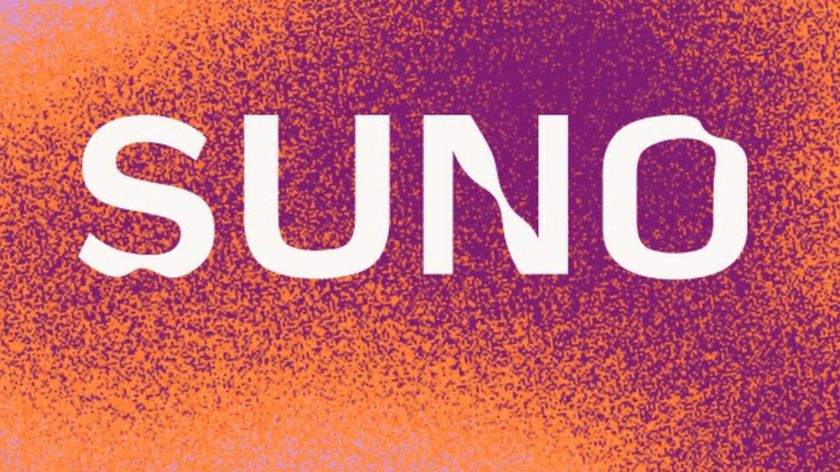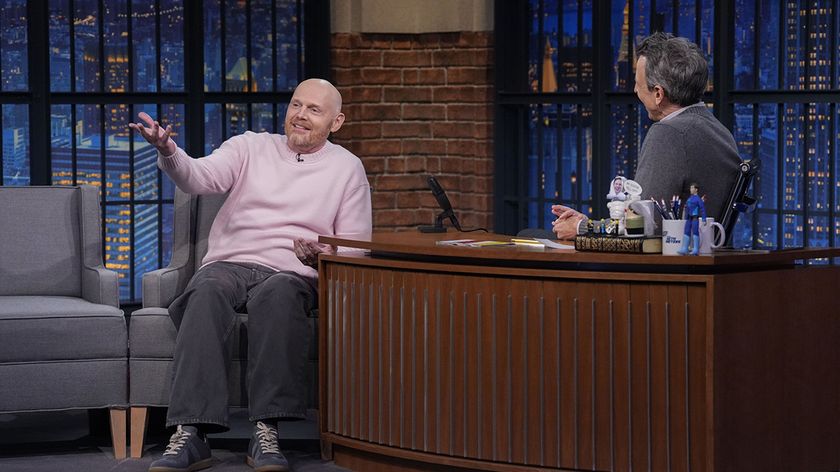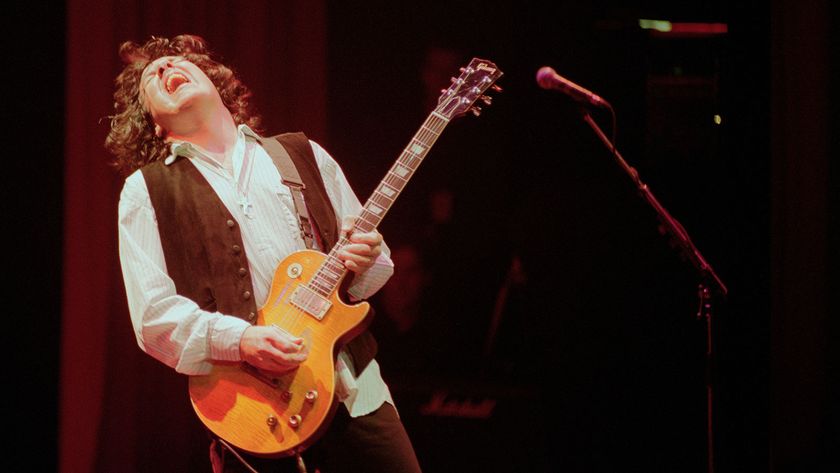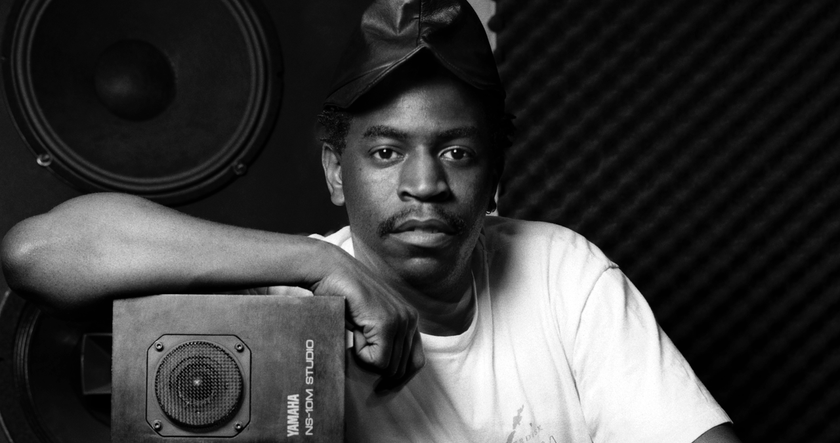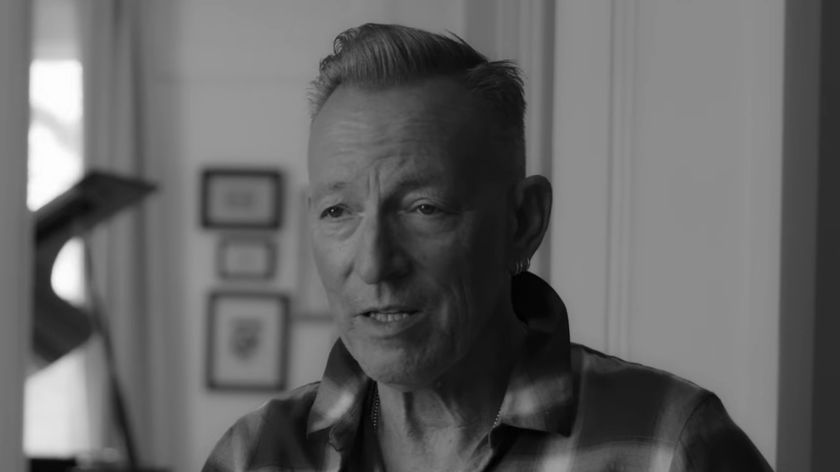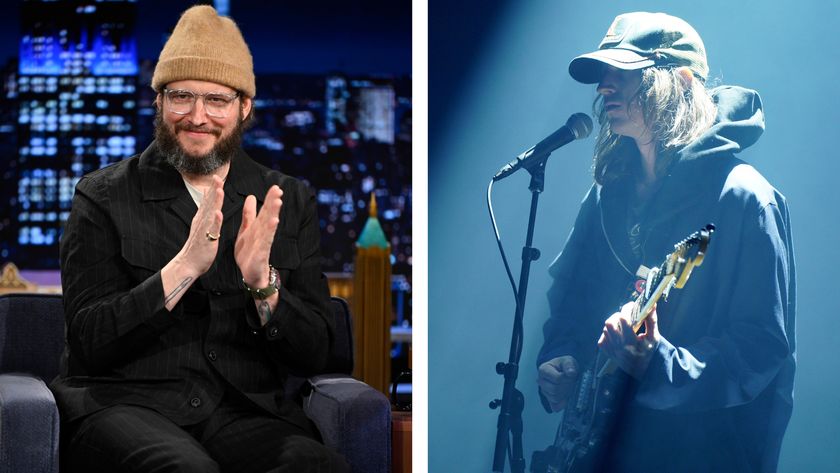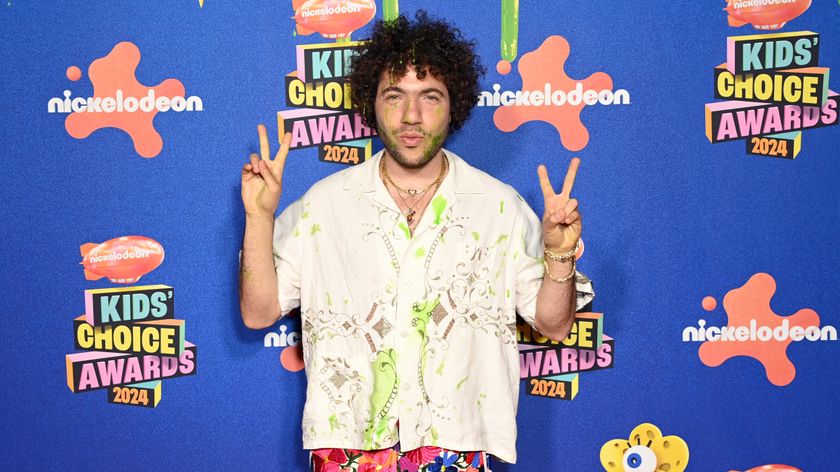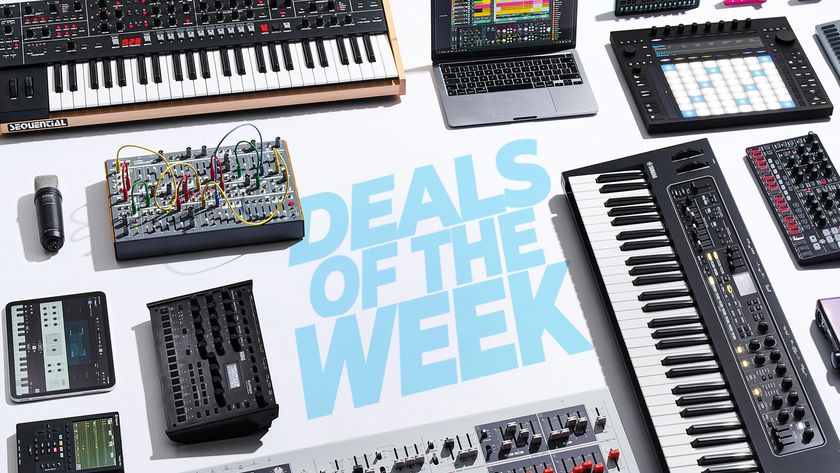35 Fender Stratocaster stars: part 1
The best-selling guitar, the best players
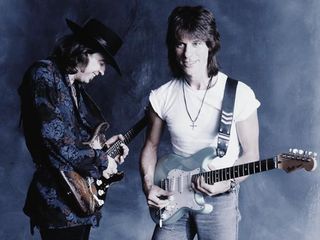
35 Fender Stratocaster stars: start here!
The Fender Stratocaster is 55 years old in 2009. But it remains - in shape and sound - a potent weapon for any guitar player.
The 'basic' Stratocaster has changed little across the decades, though there have been many tweaks and innovations that keep it sounding new. And it would 'just' be a timeless design classic, were it not for the art of its most celebrated players.
Join MusicRadar on the opening tour of 35 Strat players that made this guitar a modern icon.
In Fender Stratocaster Stars: part 1, you'll see Hendrix, Beck, Clapton and many more. For part 2: click here.
Next page: Jimi Hendrix
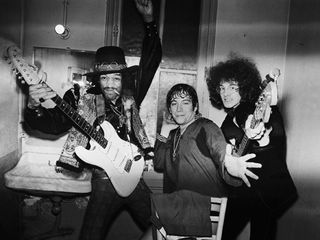
Jimi Hendrix
Buddy Holly and Hank Marvin may have introduced the sound of the Fender Stratocaster to rock’n’roll, but it was Jimi who took Clarence Leonidas Fender’s most iconic creation on a sexually-charged lysergic voyage that has been much-imitated, but never surpassed.
Jimi purchased his first Strat from Manny’s Music in New York in the summer of 1966, but his white ‘Woodstock’ Strat is arguably the most iconic of all of his guitars. It now resides at Seattle’s EMP museum after Microsoft’s Paul Allen was believed to have paid in excess of $2 million for it.
Is there a better player of the Stratocaster than Jimi? You tell us.
Next page: Jeff Beck
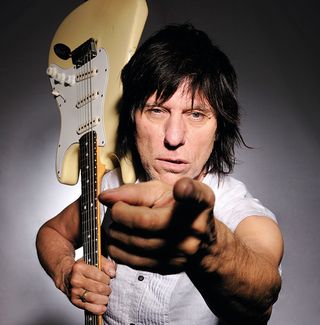
Jeff Beck
During his early days in The Yardbirds and with the Jeff Beck Group (which featured a then little-known singer named Rod Stewart), Jeff Beck favored Les Pauls and Telecasters.
By the mid-'70s - particularly on the jazz-rock monster Wired that showcased his crying bends and masterful use of feedback - Beck increasingly employed the Stratocaster.
He favoured two models:an early '50s sunburst given to him by the late Steve Marriott, and a 1960 yellow mustard version. As for plectrums, Beck ditched them and went clawhammer.
Several Jeff Beck Signature Strats have been produced, but the current version features an alder body with a thin C-shaped maple neck in Olympic White and Surf Green finishes, as well as a Custom Thinskin Nitro edition.
Next page: John Frusciante

John Frusciante
Before reuniting with the Red Hot Chili Peppers in 1998, John Frusciante lost his teeth to drug addiction. The following decade would see him crawl back to a creative peak and release an astonishing body of work of which his ‘day job’ as a funkateer alongside Anthony Kiedis and co is only one facet.
Despite the huge variety of sounds and instruments he uses, it’s those Bold As Love-style embellished rhythm parts played on a Strat neck pickup that have become his signature.
Here he’s pictured rocking his original ’57 sunburst Strat. He also owns 1962 sunburst and fiesta red models.
Next page: Mark Knopfler
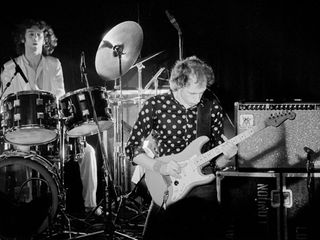
Mark Knopfler
Knopfler’s influences – Dylan, JJ Cale, Hank Marvin – are obvious enough, but from Dire Straits’ debut in 1977 he weaved them together with sumptuous grace.
Like Jeff Beck, he uses no picks and his lyrical, legato style sounds like no-one else – partly due his use of the ‘in-between’ out-of-phase position on a 3-way vintage Strat. Here's Sultans Of Swing live.
Knopfler’s own Signature Strat is a faithful recreation of that red ’57, but adds a 5-way switch to get ‘that’ sound much easier. Watch Knopfler talk Fender Strats here.
Next page: Alex Turner
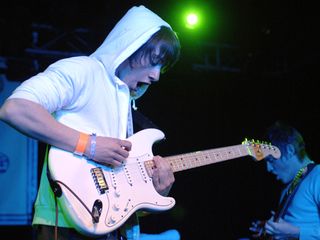
Alex Turner
Arctic Monkeys’ Alex Turner is a new breed of Strat champion. His wry observational lyrics are the Monkeys’ trump card, but he’s a tight rhythmist too. Plus, he gets ‘new wave revival’ points for wearing his Strat high.
His main Stratocasters are an olympic white American Standard (pictured), and later a black Mexican Standard, both sporting maple fretboards.
Next page: Kurt Cobain
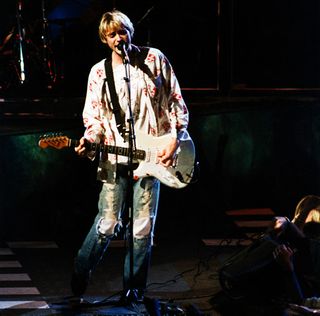
Kurt Cobain
Although Kurt Cobain is more readily identified with Fender’s Jaguar and Mustang and the posthumous Jagstang signature model, he used Stratocasters throughout an all-too-brief career.
Nirvana's Nevermind has Strats all over it, including one audibly being reduced to splinters in the 'secret' track, Endless, Nameless.
Cobain favoured the left-handed Japanese Stratocasters of the period due to their availability and vintage-style small frets. More often than not they would be rebuilt on guitar tech Earnie Bailey’s workbench as a result of Nirvana’s customary set-closing gear demolition.
Kurt Cobain is pictured above performing Lithium at the 1992 MTV Awards.
Next page: Eric Clapton
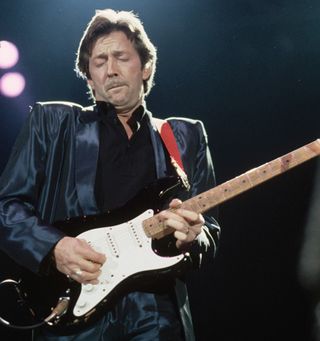
Eric Clapton
Although Clapton played numerous guitars throughout the ‘60s (Gibson ES-335s, SGs, Fender Jazzmasters and Telecasters, among others), from the moment the world heard the opening riff of Layla - played on a 1956 sunburst called ‘Brownie’ - Eric Clapton and the Stratocaster have been inextricably linked.
In 1970 Clapton bought six Strats for $100 each, and gave three of them to George Harrison, Steve Winwood and Pete Townshend. He fashioned the other three, components of ’56 and ’57 models, into one of the most famous guitars ever: ‘Blackie.’
Clapton played ’Blackie’ for all it was worth and the guitar survived numerous refrettings, but by 1987, he decided to retire his treasured axe.
‘Blackie’ was eventually sold at Christie’s in New York for $959,500 to raise funds for Clapton’s Crossroads Centre, which treats patients suffering from drug and alcohol addictions.
Only God Himself could do better.
Next page: Dick Dale

Dick Dale
Legend has it that when Leo Fender gave an early Fender Stratocaster and amp to Dick Dale, Leo told him to "beat it to death" and tell him what he thought of it. Dale promptly attacked the guitar with his usual style, but blew up Fender's amp and speakers.
He then did it again 48 more times.
Exasperated, Dale helped Leo Fender design a louder amp, the Showman, that could cope with his incendiary playing.
'Showman' is a perfect nickname for surf-guitar legend Dale, whose upside-down-strings playing is as unique as you’d expect from a man who once kept a pet lionness in his kitchen.
Next page: Nile Rodgers
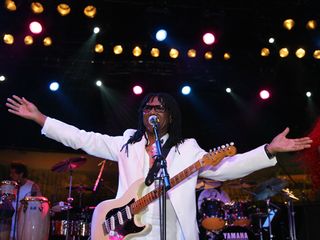
Nile Rodgers
Disco often gets a raw deal when it comes to critical acclaim. Yet just one listen to the powerhouse trio behind Chic – drummer Tony Thompson, bassist Bernard Edwards and guitarist/producer/leader Nile Rodgers – screams talent. In particular, Rodgers' rhythm playing is light and fresh as snow.
Rodgers calls his main Stratocaster 'The Hitmaker'. It's a’59/’60-era hard-tail you’ll have heard on hit albums he’s produced for Madonna, Bowie, Diana Ross, Sister Sledge, Mick Jagger, Jeff Beck, Duran Duran, and of course, Chic.
“The Harry Fox Agency [for songwriters] once figured out that something like two billion dollars worth of music has flowed through this one Stratocaster,” Rodgers smiles.
The artists he’s helped probably consider it a bargain.
Next page: Iron Maiden's Dave Murray

Dave Murray of Iron Maiden
Murray’s most iconic Strat squeeze is a modified black 1957 model that featured on all of the classic 1980s Iron Maiden albums.
Bought via an advert in now-defunct UK music magazine Melody Maker in 1976 and once owned by Free’s Paul Kossoff, Murray added DiMarzio Super Distortion humbuckers for extra fatness.
That particular guitar has been retired from live use for several years. These days Murray wields modern Fenders modified to his spec (see the sunburst model pictured), but 2009 saw Fender honour Murray with a USA signature model based on his original ’57.
Next page: Curtis Mayfield

Curtis Mayfield
Mayfield was most acclaimed for his lithe falsetto voice, social commentary and writing skills. But boy, could he play guitar.
Jimi Hendrix cited Mayfield as his biggest influence, and with Mayfield’s invention of a bizarre F# A# C# F# A# F# tuning that he used throughout his career, he really was a one-off.
Mayfield is shown in 1972, the year he released the landmark Super Fly.
Next page: George Harrison
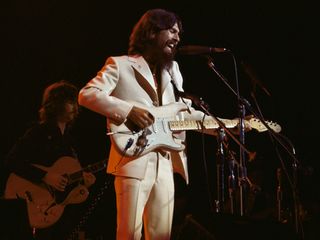
George Harrison
February 1965 saw Beatles roadie Mal Evans purchase Stratocasters at George Harrison and John Lennon’s behest. Although Harrison’s recollection placed this amidst the Rubber Soul sessions, The Beatles were in fact recording Help! at the time, as proven by photographic evidence of Lennon at Abbey Road with one of the sonic blue pair that Evans obtained.
Nowhere Man is probably the most overt example of a Stratocaster on a Beatles recording: George and John are playing their Fenders in unison.
Harrison’s Strat – neck plate dated December 1961 – would later undergo a psychedelic makeover and become known as ‘Rocky’.
Post-Beatles, George chose a white Stratocaster (pictured) for the 1971 Concert For Bangladesh that some have speculated was assembled from the same haul of parts that yielded Eric Clapton’s Blackie.
Next page: Jeff Healey
...
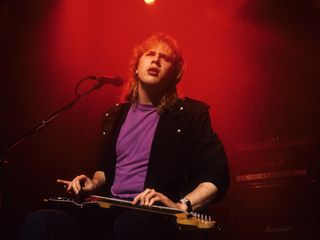
Jeff Healey
Canadian blues-rock-jazz guitarist Healey was a phenomenon. He was blind from eight months old – suffering from retinoblastoma, his eyes had to be surgically removed, and he was given artificial replacements.
Nevertheless, Healey taught himself to play guitar aged just three.
Healey developed a unique style of playing his Fender Strat ‘over the top’, flat on his lap, allowing his fretting-hand to produce wildly strong vibrato and odd chord voicings, best heard on his Grammy-nominated debut See The Light.
Stevie Ray Vaughan and Albert Collins were fans, as were Buddy Guy, BB King, ZZ Top, Steve Lukather, Eric Clapton, all of whom he played with.
Healey died from cancer in March 2008, but his finest work evinces one of the Stratocaster’s most singular and determined talents.
Next page: Billy Corgan

Billy Corgan
From Gish right on to the present, Billy Corgan’s buzzsaw guitar roar - thick, turgid rhythms and searing leads - has been as much the heart and soul of the Smashing Pumpkins’ sound as his sneering vocals
Flying in the face of the back-to-basics aesthetics of grunge, Corgan was always a shredder at heart - Eddie Van Halen was one of his earliest heroes.
But while EVH gravitated to homemade Strat-style jobs, Corgan preferred the real deal.
His Signature Strat borrows heavily from Fender’s Highway 1 Series and features three DiMarzio humbucking pickups (a Chopper, along with a BC-1 and BC-2, the latter two Corgan designed himself).
Next page: Rory Gallagher
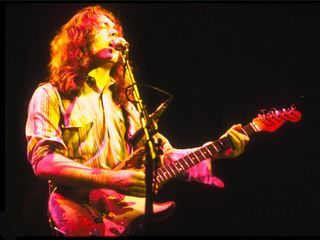
Rory Gallagher
Rory Gallagher was a gritty Strat maestro appreciated by fewer than he deserved. After splitting his Cream-alike trio Taste, the native of Cork blazed an uncompromising ’70s solo career based on live rave-ups.
His battered 1961 Fender Strat, something of an icon, was always in tow.
Gallagher’s oeuvre was based on hyper-amped blues licks, but his influence spread wide: guitarists diverse as The Edge, Johnny Marr, Keith Richards and Slash have all spoken of their admiration. Gallagher was even invited to audition for The Rolling Stones and Deep Purple, but he preferred his own path.
When Gallagher died in 1995, Eric Clapton simply stated that Gallagher was “The man who got me back into the blues.”
Next page: Buddy Holly

Buddy Holly
A rock ‘n’ roll pioneer and musical innovator, Holly’s rhythmic guitar style owes much to the fact that he grew up playing a banjo, evinced on galloping anthems like Not Fade Away and Peggy Sue.
But he was a master at sweet, minimalist leads, too, such as the one heard on Words Of Love.
Conventional in appearance, he made his mark with the then way-out-looking Stratocaster. His first record featured a mid-‘50s Strat (seen here), bought with money borrowed from his brother Larry. It was stolen on tour in 1957.
His last Strat, a ’58 three-tone sunburst, played but an hour before he died, is currently on display at The Buddy Holly Center.
Next page: Hank Marvin
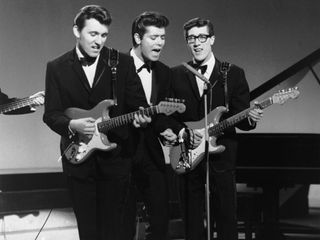
Hank Marvin
Hard to imagine now, but The Shadows’ Hank Marvin caused hysteria among aspiring British guitar players of the 1950s. He played and owned the first Fender Stratocaster in the UK, serial number 34346, finished in ‘flamingo pink’ (a seeming mis-paint of catalogue colour fiesta red) with gold hardware, imported from the US by frontman Cliff Richard.
"It was like seeing something from another planet,” admitted fellow Shadow Bruce Welch (pictured left above), who still owns the guitar. The Shadows put the image of Fender Stratocasters into millions of 1950s British homes.
Pink Floyd’s David Gilmour puts it simply: “Hank playing that guitar was what made me want to get a guitar.”
Next page: Stevie Ray Vaughan

Stevie Ray Vaughan
Stevie Ray Vaughan became a one-man blues revival in 1983 when he contributed biting leads on David Bowie’s album Let’s Dance.
In the same year, Vaughan’s debut record, Texas Flood, recorded with his band Double Trouble, showcased his forceful style of mixing simultaneous rhythm and lead parts, along with his powerful vocals
Vaughan drew from the likes of Albert King, Buddy Guy, Eric Clapton, and most of all, Jimi Hendrix. He owned several Strats, all given nicknames (such as Lenny, named after his then-wife Lenora), but his workhorse guitar was Number One, a mongrel Strat made from a ‘63 sunburst body and a ‘62 rosewood neck.
Vaughan tinkered with Number One, outfitting it with a left-handed tremolo (to emulate Hendrix), and decorating it with stickers to spell ‘SRV.’
Originally rumoured to be buried with Vaughan, Number One is locked in a vault owned by his brother, Jimmy.

MusicRadar is the number one website for music-makers of all kinds, be they guitarists, drummers, keyboard players, DJs or producers...
- GEAR: We help musicians find the best gear with top-ranking gear round-ups and high-quality, authoritative reviews by a wide team of highly experienced experts.
- TIPS: We also provide tuition, from bite-sized tips to advanced work-outs and guidance from recognised musicians and stars.
- STARS: We talk to musicians and stars about their creative processes, and the nuts and bolts of their gear and technique. We give fans an insight into the craft of music-making that no other music website can.
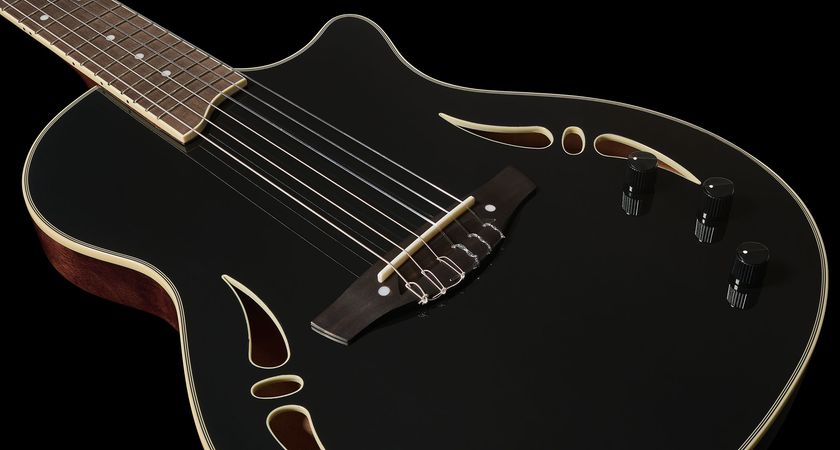
“A classical guitar for the modern era”: Harley Benton unveils the Custom Line Nashville Nylon BK, and its latest nylon-string electro-acoustic hybrid is a super-affordable thinline that's designed to welcome electric players

“Once the custom shops came out, everyone was talking about them:” Jackson and Revocation’s David Davidson just dropped the hottest metal guitar of 2025 – the Warrior WR7

“A classical guitar for the modern era”: Harley Benton unveils the Custom Line Nashville Nylon BK, and its latest nylon-string electro-acoustic hybrid is a super-affordable thinline that's designed to welcome electric players

“Once the custom shops came out, everyone was talking about them:” Jackson and Revocation’s David Davidson just dropped the hottest metal guitar of 2025 – the Warrior WR7
